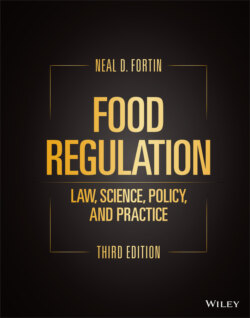Читать книгу Food Regulation - Neal D. Fortin - Страница 87
2.3 THE CENTRAL ROLE OF INTENDED USE
ОглавлениеIn the Nutrilab starch blockers case, the manufacturer’s intent was clear. As was the fact that the product was not consumed for its taste, aroma, or nutritive value. Thus, starch blockers were deemed other than a conventional food.
The Nutrilab case provides one of the best rules for determining whether a product is a food or a drug. First ask, is the product a common‐sense food? If not, is it consumed primarily for taste, aroma, or nutrition? If the answer is no to both these questions, then the product may not be a food. There can be other factors, but this common‐sense rule still provides excellent guidance.
Other products, however, might not present such clear distinctions. This subject is discussed in more depth in future chapters, but it is important to understand that the intended use of a product may determine whether it is a conventional food, a dietary supplement, or a drug. A generation ago, any health claim for a food or supplement moved the regulation of the product to “drug” status. Food–drug distinctions are less clear today because health claims no longer automatically move a food or dietary supplement over to regulation as a drug. FDA‐approved health claims are permitted, for instance, without triggering drug status. In addition, structure–function claims are a category of health‐related claims that are not regulated as health claims (for example, “calcium helps build strong bones”).
Foods can make structure–function claims without automatically being regulated as drugs. On the other hand, non‐food products that bear a structure–function claim fall into the drug category.9 This is why the food/non‐food determination is pivotal when examining structure–function claims on products.
The law is straightforward on simple claims. This organization becomes murky at times because it can be difficult to draw distinctions between structure–function claims that may imply a drug claim. Chapter 5 returns to this topic in detail. For now, just be sure to understand two straightforward ways a product may be regulated as a drug, subparagraphs (B) and (C), in the drug definition:
Non‐food that is intended to affect the structure or any function of the body.
Intended use in the diagnosis, cure, mitigation, treatment, or prevention of disease in man or other animals.
